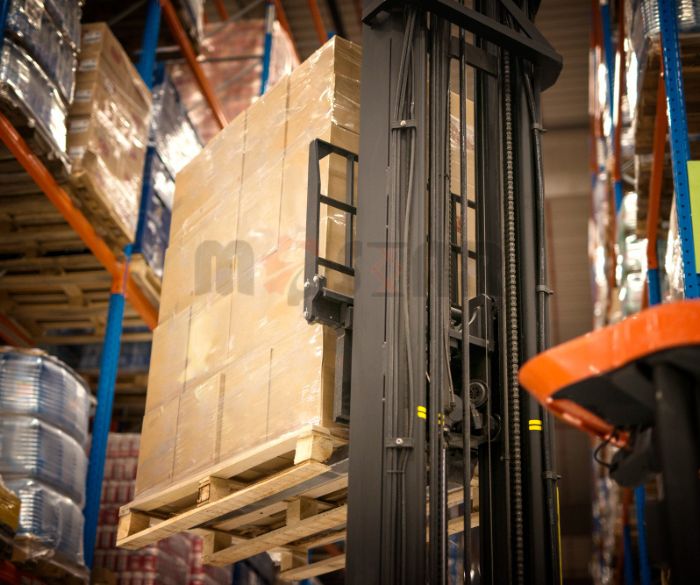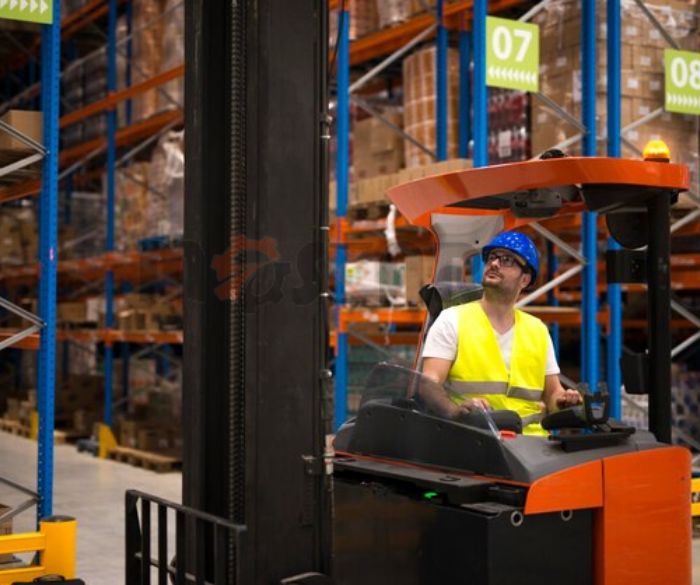The market of lift manufacturers is overflowing with the infinite variations of small cargo lifts that have different features. You may have seen them installed in factories, leisure venues, warehouses, industrial and retail premises. They help to lift goods easily in roll cages and crates or on pallets and trolleys between different levels of the building. Without further ado, let’s dive right into all the nitty-gritty details of a small goods elevator before you buy it.
What is a Small Goods Elevator?
A small goods elevator, also known as a “dumbwaiter” or “small freight elevator”, is a compact hydraulic system lift platform. The word “small” in it means that the weight capacity is limited and the platform size is smaller. They are specifically engineered for the triad of productivity, safety, and simplicity. Below are the key features of our cargo lifts:
- Capacity & Size: These elevators are present in various models, with lift heights that range from 3 m to 6.5 m and load capacities between 300 kg to 1500 kg. A standard freight lift dimension of the platform is 1.5 m x 1.5 m.
- Innovative & Solid Design: Unlike bulky freight elevators, small cargo lifts operate on a single rail system that demands minimal installation area. Their hydraulic system enables flawless, quiet operation, while the digital controller makes the task accurate.
- Door & Control Options: Available with manual, automatic, or hydraulic doors, these lifts can be customized according to your worksite. Plus, the multi-floor control panels allow you to run business from different levels to improve the workflow.
- Advanced Safety Features: Built with safety interlocking devices, emergency stop buttons, overload warnings, voltage protectors, and manual lowering valves, these lifts prioritize user protection. Additional safeguards like an upper safety limit switch and explosion-proof valves.

Key Uses of Small Goods Elevators
Small goods elevators are the ultimate time-saving machines for various industries. These lifts streamline operations, reduce manual labor, and improve working capacity. Here are some applications of small goods elevators:
- Restaurants & Hotels: They help in moving food, dishes, and supplies between levels to provide service on time with full sanitation.
- Hospitals & Labs: They ensure quick and safe transportation of medical supplies, test samples and critical/disabled patients to reduce contamination risks.
- Retail & Warehouses: Retail stores and warehouses use them to transport inventory between floors, which saves employees from unnecessary strain.
- Offices & Libraries: It is used in offices and libraries to move important documents, books, and supplies.
- Homes & Apartments: Luxury homes use these lifts for moving groceries, laundry, or even books between floors, adding convenience to daily life.
Benefits of Installing a Small Goods Elevator
Some buyers have a burning question in their mind regarding the installation of small goods elevators: does it require costly renovations and major structural changes? Absolutely not! Mostar Lift’s small material lifts are designed to suit your facility, not the other way around. They can be easily fitted into your existing layout.
Our professional engineers can install the lifts in settings you believe impossible, whether you own a modest warehouse, a renovated multi-level building, or any other confined storage unit. Companies that solely deal in frequent stock movement can take advantage of these lifts to accelerate activities.
The installation process is not too laborious, as it usually takes between 1 to 3 days or more depending on the lift size and the location. Each and every step is planned in advance, with risk assessments and safety approvals in place before the work starts. We have highly trained installation teams (no subcontractors) to guarantee an error-free, professional setup so that you can start using your lift asap.
For your peace of mind, Mostar Lift is ISET-certified (COC, CIC), AAA-certified, and we follow the most rigorous safety standards. With expert design and installation, you get a practical, cost-effective lifting solution without unnecessary hassle.
Factors to Consider When Choosing a Small Goods Elevator
The moment you decide to buy a goods elevator, it’s beyond the upfront cost. It’s about long-term performance, durability, and impeccable function. It doesn’t matter if it’s in the form of a cargo elevator or a mezzanine goods lift, your choice will rely on factors like lift height, load capacity, and below mentioned.
- Model & Features: The right elevator is an asset for your business. We have different models, such as MGL0.3-3.6, MGL0.5-4, MGL0.5-5, MGL0.5-6.5, MGL1-3.5, or MGL1.5-4.6, with distinct specs and selling pricing.
- Setup & Labor: We believe in transparent pricing, so there will be no hidden charges for site measurements or post-quote fees. It includes everything from a competent assembly to thorough quality checks.
- Operational Expenses: Our team makes sure that every unit you pay for is built to last with strict quality control, expert supervision, premium packaging and secure shipping.
- Customer Support: Just like other lifting solution providers, we also offer a detailed maintenance manual and conduct typical return visits to sustain your lift in excellent condition. From supervision to last approval by experts, we’re with you every step of the way.

Maintenance & Troubleshooting Tips
Without any hesitation, we can say that a small freight elevator is a silent workhorse of your enterprise that runs day and night. That’s why it needs maintenance to keep operations productive and without risk. Below is the checklist for maintenance and fixing common technical or mechanical issues before they become headaches.
Routine Inspections & Servicing
- Get the service done by a licensed professional with safety regulations.
- Review the safe working load (SWL) markings on the guide. Do not overload the lift above its capacity.
- Check all safety apparatus, including interlocks and brakes, every time before the use.
- Always keep guide rails, pulleys, and moving parts clean and lubricated to forestall accidental wear and tear.
Common Issues & Quick Fixes
- Stuck in the Midway: Look for blockages in the shaft or call a technician for an overhaul.
- Unusual Noises: Squeaks or grinding sounds may be a sign of lubrication or part replacement.
- Doors Not Closing Properly: Sensors or misalignment might be the cause so inspect and clean them often.
- Power Failure: Test that your backup power or manual lowering system is working.
When to Call a Professional?
If your lift isn’t running as it should, don’t risk DIY fixes. As a worldwide service provider, Mostar Lift offers next-day emergency breakdown support with minimal downtime. With stocked OEM replacement parts, most issues are resolved on the first visit. Try to stay proactive, and your mini elevator will keep the business on track!
Contact Mostar Lift Today
Overall, the purchase of the right small goods elevator is an initial investment in a profitable business. Assess your business needs, maximum load capacity, and compliance requirements before making a decision. If you really want to invest in a lifting solution or want an expert opinion, reach out to Mostar Lift. Contact us at +0086-18705416611 for guidance. You can send a quick inquiry today—our team will help you find the ideal lift for your business!
Frequently Asked Questions
A cargo elevator is a heavy-duty lift designed to transport goods, materials, or equipment between floors in commercial premises.
A lift for goods is typically known as a goods lift, freight elevator or dumbwaiter lift, designed to move loads effortlessly.
Goods lifts are loaded with safety features like interlocking doors, emergency stops, overload warnings, an explosive-proof valve, a manual lowering valve and 24V DC.
Yes! Hydraulic elevators are totally safe, with several safety specifications and durable designs.
It depends on your needs! Hydraulic elevators are powerful and great for heavy loads, while electric elevators are faster and energy-efficient for frequent use.
A small goods elevator can typically lift up to 1,500 kg, but capacity varies by model.
It usually takes a few days to a couple of weeks to install, depending on the freight elevator size and site requirements.
